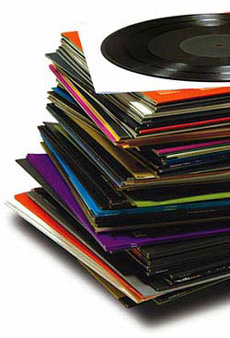“trans”

PERFORMANCES OF: JULY 29, 1978 at the Blind Lemon, Berkeley; AUGUST 5, 1978 at Pangaea, San Francisco; AUGUST 6, 1978 at Fort Mason Center, San Francisco Davey Williams / electric guitars, banjo, mandolin, etc., La Donna Smith / viola, violin, piano, voice, percussion, Theodore Bowen / bass, tenor saxophone, musette, etc.
folk music trans museq 2
Williams, Smith, Bowen: as above.
Recorded: January 22, 1978 & Winter 1977-78, Alabama.
What immediately struck me about “Trans” was the high level of musicianship, the players’ virtuosity which, though apparent on the group’s first recording (trans museq 1), was partially obscured by the overall impact of their music.
What one mostly noticed on record were the various pulls, the emergence/convergence and disappearance of detail in a multifaceted kaleidoscope of sound. The way the music took shape in performance was similar but more pointed because of the way the individual contributions stood out. But there was still the same fascination with color, texture, and timbral emphasis, and the same willingness to stop and explore particular areas of sound, often through an implied or actual repetitive motion, and allowing those sounds to exist independently of each other to create a held tension, both of line and of context, the process itself (its overall progression) being highly tangential.

This, it should be pointed out, is quite a bit different from the way most free improvisation takes place. Unlike most English free music, it doesn’t have that seemingly inherent tendency toward compression of nearly all the elements involved. Rather, it tends toward the other extreme – which means that, in one sense, it is a more open music in that it can absorb more, both of a strictly technical and of a stylistic nature, and still remain completely itself. That also gives it a fairly unhurried quality, even when it goes by fast; and it never really seems to want to impose itself on you, which may be one of its most distinctly “southern” characteristics.
Of the three players, Williams proved the busiest. He seemed the least content to settle in any one place, often pushing determinedly ahead on his own or else breaking his stride with the application of any number of tonal distortion devices to his instruments (as an egg beater, old guitar string, a large wooden “T”, metal disc, etc.). Neither as rigorously ascetic as Derek Bailey, nor as quietly ambivalent as Eugene Chadbourne, nor as out-of-phase as Henry Kaiser, Williams’ playing is just as original, suggesting an open-ended high drama (a multi-sensed, often highly electrical, sound bonanza) shot through with any number of avant-garde conceptual suppositions.
Smith’s work on any of her instruments was a study in opposites, at times more purely percussive and sound-conscious, at others sliding into more linearly (and sometimes lyrically) conceived areas. Her mobility and conceptual self-confidence were particularly noticeable and, though she frequently worked in a slower space than Williams, her sound was just as dominant, just as capable of moving anywhere completely unexpectedly.
Bowen’s playing was at first rather curious, mainly because he is as comfortable not playing his instruments as he is playing them, and he would often not play at all for extended periods. Yet his contributions, mainly on bass, and often simply the addition and working through of some new tone color or some sort of rhythmic or harmonic counterpoint, were always telling, would always prove welcome; occasionally, he would surprise and charge right in in some particularly virtuostic manner. So that I came to value his exceptional existential stance as an integral part of the way the music happened.
Through it all, there was a feeling of freshness about the music, a freshness of conception and an implicit challenge to prevailing musical assumptions, even some of those associated with free improvisation. The group’s new record, folk music, half of which was recorded live, retains that vitality and is a good up to the minute example of how the music works. If anything, their performances here were even more charged than that, but the record stands on its own as an important and accurate documentation of Trans’ music.
Henry Kuntz, 1978

Addendum: I should mention the appearance of Trans’ newer releases: Jewels (trans museq 3) featuring Smith and Williams with harpist Anne LeBaron; Velocities (trans museq 4) with Smith and Williams and Italian percussionist Andrea Centazzo; and Direct Waves (trans museq 5), with Smith and Williams.
What is most noticeable on these LPs is that, despite the unorthodox sounds and percussive interludes, Williams and Smith are nothing less than highly virtuostic “line” players. In a sense, they represent some kind of ultimate flowering of traditional technique as applied to their instruments – different, say, from someone like Derek Bailey whose fundamental technical presuppositions (i.e. simply how he plays his instrument) are so completely of another sort, that is, so completely “explo-sive” rather than moving in a progression of any kind. On Velocities, this manner of technical wizardry of Williams and Smith can be heard first hand; but Jewels (due in no small part to the supple resonances of harpist Anne LeBaron, who initiated the LP) presents more of the multi-possibilities and down-home flavor of this wonderful music from the south. Direct Waves takes the music to another level, synthesizing the musicians’ fleetness and virtuosity with the music’s more radical formal and conceptual elements.
Henry Kuntz, 1982




Leave a Reply